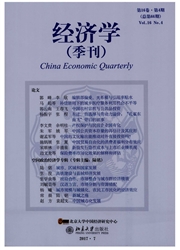

 中文摘要:
中文摘要:
Bakshi和Chen(1996)在代表性投资者经济中提出了基于财富偏好的资产定价模型。本文研究了在异质性投资者经济中财富偏好对资产定价的影响。如果风险资产的价格服从几何布朗运动,那么资产市场具有两基金分离现象。本文首先证明了基于风险基金的资产定价模型,然后使用该模型证明了如果定价的基准是单个的投资者的最优消费和财富时,那么基于财富偏好的资产定价模型成立。但是,当定价的基准是总消费和总财富时,基于财富偏好的资产定价模型不能成立。也就是,不能在异质投资者经济中将Breeden(1979)的经典CCAPM模型推广到包含财富偏好的资产定价模型。
 英文摘要:
英文摘要:
In the representative investor's economy, Bakshi and Chen (1996) propose a capital asset pricing model based on the preference for wealth. This paper examines the effect of preference for wealth on asset prices in an economy with heterogeneous investors. If the price of the risky asset follows the geometric Brownian motion, the asset market exhibits the separation of two funds. We prove that the CAPM for the risky fund, and find that the CAPM based on preferences for wealth holds true when the pricing kernel consists of individual investors' optimal consumption and wealth. However, we find that the CAPM based on the preference for wealth cannot hold true when the pricing kernel consists of the aggregate consumption and aggregate wealth. That is, the Breeden' s (1979) CCAPM cannot be extended into asset pricing based on preferences for wealth in an economy with heterogeneous investors.
 同期刊论文项目
同期刊论文项目
 同项目期刊论文
同项目期刊论文
 期刊信息
期刊信息
